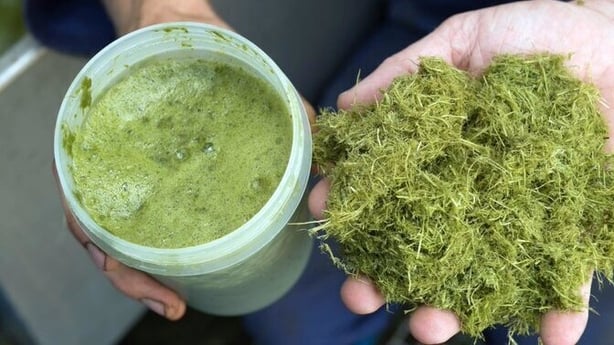Analysis: research shows that grass biorefineries may offer significant benefits for farmers, communities and the environment
By James Gaffey, MTU
The bioeconomy has been an emerging sector in Ireland in recent years. This is driven by the need to develop more sustainable food, materials and energy, while creating opportunities for sustainable development and diversification for primary producers such as farmers and foresters. This has been supported at Government level by a National Bioeconomy Policy Statement from 2018 and the recent Bioeconomy Action Plan 2023-2025.
This shift from a fossil-based economy to a bio-based one offers a number of key benefits including climate mitigation, resource resilience, rural job creation and boosting the competitiveness of our indigenous primary sectors and industries. This biomass can come in many forms, but is mainly produced by our agriculture, forestry and marine sectors. It includes primary biomass such as cereal crops, grasses, trees, fish and seaweeds, as well as the by-products from these sectors, like straw, forestry residues or food processing sidestreams.
What can this biomass be used for?
The conventional uses of these materials includes crops for food processing and wood for construction. Indeed, many of the imported fossil-derived material and energy products we currently rely on in our everyday lives could actually be produced from local biomass. Producing these materials from biomass can even offer important environmental benefits over fossil-based alternatives.
From CNN, what is biomass?
Biorefineries are key enabling technologies of a circular bioeconomy. These biorefineries essentially act as factories for converting biomass and residues into a combination of high value materials, such as biopharmaceutical and cosmetic ingredients, food, feed, biochemicals and bioplastics, fibre, bioenergy and biofertilisers.
We import around €4.5 billion of fossil fuels annually in Ireland. We also import large volumes of imported fossil-derived plastics and chemicals to service our biopharma and medical device sectors, as well as large import dependencies in agri inputs, such as animal feed and artificial fertilisers.
The circular bioeconomy and biorefineries can hold the key to greater self-sufficiency and sustainability in this regard. Within these biorefineries, the focus is on resource efficiency, separating the individual components of biomass including sugars, proteins and fats and converting these into multiple additional products, generating greater overall value from the primary materials.
What's the story with grass?
An example of Ireland's future bioeconomy potential can be seen in the case of grass, which makes up over 90% of total agricultural land in Ireland. Currently, of course, grass is largely used as fodder for our livestock system, particularly in beef and dairy cows.

But recent research has shown the potential to use grass biorefineries to improve grass use in our animal feeding systems. For example, the Biorefinary Glas project has shown that it is possible to optimize the protein of grass into two components by processing grass in the biorefinery. One of the products, a fibre press cake containing 50-60% of the original grass protein, can be fed to cows instead of silage. The other protein concentrate, which contains most of the remaining original grass protein, can be fed to monogastric animals such as pigs or chickens.
Trials to date have shown that both dairy cows and pigs have responded positively in terms of performance to these grass biorefinery protein products. In addition, there are significant environment benefits to the approach. In the case of pigs, the grass protein can replace imported soyabean meal which has a five times larger environmental footprint and is often linked with regions associated with deforestation.
The cows which have been fed with grass biorefinery press cake have exhibited reduced losses of nitrogen and phosphorous in excrement, with lower rumen methane production per kilogram of milk. Given that the agriculture sector is responsible for over a third of national greenhouse gas emissions, these savings can be significant, and may be further enhanced through integration with other sustainable solutions such as renewable energy and sustainable grassland management practices.
James Gaffey from MTU explains the Biorefinary Glas project
Grass biorefineries also open up the opportunity to produce many other high value materials than animal feed from our vast grasslands. The Rural BioReFarmeries project is exploring the development of human as well as animal grade protein from grass, in addition to bio-based chemicals and packaging and anti-microbial additives to reduce food spoilage. International companies such as Gramitherm have already been working to develop grass fibre-based eco insulation panels, something that should be of interest for Ireland, where 500,000 homes require retrofitting by 2030 under the Government's Climate Action Plan.
The Government has made a number of recent investments in grass biorefinery infrastructure in research and development in recent years. This includes a €3 million investment in a grass biorefinery and anaerobic digestion demonstration plant at Farm Zero C in Cork, with additional investment coming through Enterprise Ireland.
This farm-based bioeconomy development recognises the potential for biorefineries coupled with anaerobic digestion to represent a key strategy for the agricultural sector to contribute to our 2050 climate neutrality targets. It's a way to ensure the economic profitability of our farming sector, while producing essential everyday products and energy for our communities.
Follow RTÉ Brainstorm on WhatsApp and Instagram for more stories and updates
James Gaffey is Co-Director of the Circular Bioeconomy Research Group (CircBio) at the Shannon Applied Biotechnology Centre at MTU. He is a Science Foundation Ireland awardee.
The views expressed here are those of the author and do not represent or reflect the views of RTÉ


